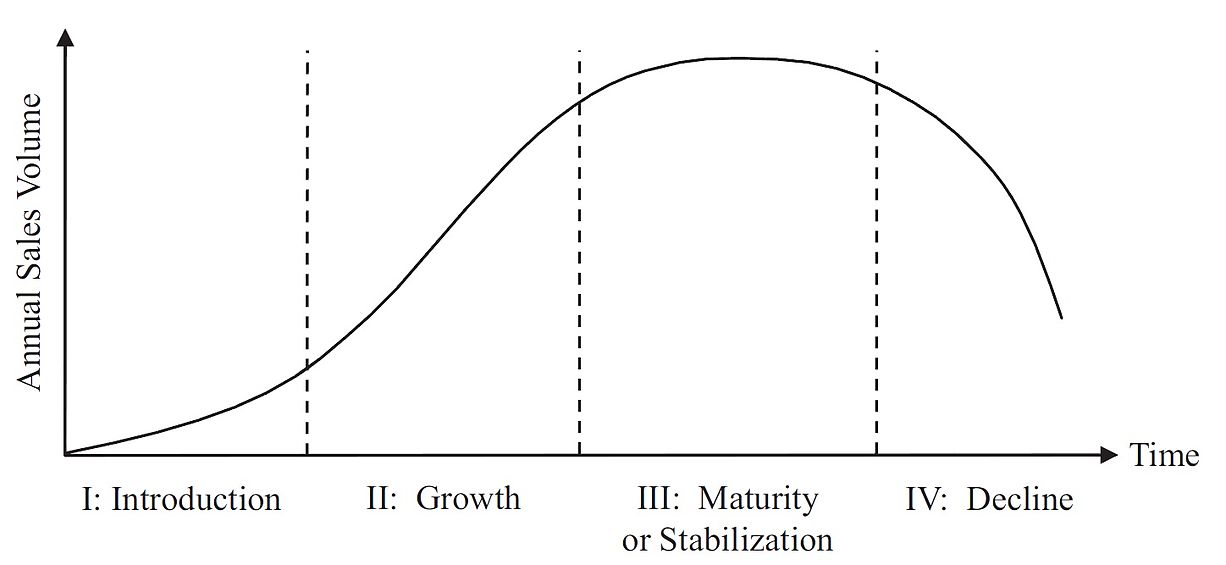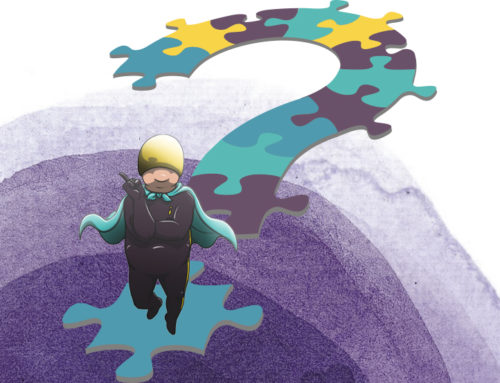What can happen to businesses who do not digitally transform depends on the pace of change influencing the product lifecycle of that business. Industries experiencing slow change can simply adapt with the times. In industries that are experiencing rapid change, businesses must transform; they need revolution, not evolution if they are to survive. The one thing we can be sure of is that this pace of change is ever increasing. Moreover, it is unavoidable and affecting ever more industries, businesses, charities and government organisations.

In 1965 American economist and professor at Harvard Business School, Theodore Levitt, wrote an article in Harvard Business Review explaining how the product lifecycle works. Most successful products/services go through a predictable sequence of growth stages that are mirrored in our own life cycles. Innovators who introduce a new product that survives through the growth phase tend to win the lion’s share of the profits. Competitors inevitably bring rival products to the race during the maturity phase. These guys are largely taking a share of the inventor’s market before it inevitably heads into decline.
Levitt’s frustration at the lack of use of this concept in business becomes wonderfully apparent when he claims, “In a recent survey I took of executives I found none who used the concept in any strategic way whatever, and pitifully few who used it in any kind of tactical way. It has remained—as have so many fascinating theories in economics, physics, and sex—a remarkably durable but almost totally unemployed and seemingly unemployable piece of professional baggage”
Over the past 60 years the Product Life Cycle diagram has remained unchanged. The curve remains valid but the length of time it takes for the cycle to complete is collapsing. This important evolution in product lifecycles is been much overlooked. What used to take years or decades can now take months.
In answer to the question What is Digital Transformation? we said “Digital Transformation is how an organisation becomes built to continually change, innovate and reinvent rather than simply enhance or support the traditional methods of its industry. The word ‘digital’ is a synonym for the pace of change occurring in today’s world, driven by the rapid adoption of technology.”
We can dramatically reduce the time needed to take a product through its lifecycle in today’s digital world. The time we need to introduce a new concept, test it, verify if it has growth potential, maximise the profits from that product or service and watch it reach competitive maturity before it eventually fades into the sunset is being exponentially squashed.
Some industries are affected more than others and successful branding does not bring immunity. Coca-Cola has been a household staple since 1886 yet in 2016 Fortune reported a massive slump in consumption in the USA. This was principally because consumers have become increasingly skeptical of artificial sweeteners. Even iconic brands need to reinvent.
Take the music business for example. Vinyl records lasted for around 100 years. Cassette tapes were dominant for around 50 years. CDs lasted 25 years. MP3 music downloads launched around 15 years ago and now we’re streaming. The interesting thing about this is that the rate of change of the business model is not linear, it’s logarithmic. When we stand still in this moment and look back, we perceive the change to be a reasonably linear process.
Coca-Cola, while an innovator in its own right, didn’t foresee that this slump was inevitable. The music industry has loathed and resisted the changes in their business model believing the old model was adequate. As Levitt points out, the length and slope of the market development stage depends on the product’s complexity. It depends on its degree of newness, its fit with customer needs, and the presence of competitive substitutes. We can innovate, test, source, purchase, hire, outsource, co-create and deliver goods and services in today’s global economy more easily than Levitt could have conceived when he wrote his HBR article over 50 years ago.
On the PLC graph, the function of time is collapsing. Businesses that don’t transform, become digital innovators and leverage technology in order to remain relevant will die. It’s not enough to simply adopt technology at the maturity stage of a product lifecycle; by then we’re in a cost driven race to the bottom – the profits have been milked from the system. To become a true digital innovator, a business needs to deliberately innovate and create new products and services. Some will fail, others will succeed. Social media and digital content creates massive waves of opportunity for those that do. Customers now try something new much more readily than ever before. The breadth and speed at which communications travel only increases the size of those opportunities and the potential rate of adoption of new products and services.
Businesses that do not digitally transform will be washed away with the pace of change; it will happen with remarkable speed and it will come with no warning.
The leadership challenge, regardless of organisational size, is to actively create a culture of deliberate innovation. Leaders must invest in reinventing while maintaining business as usual. If businesses do not digitally transform now, if we wait until business as usual becomes difficult to maintain we run the risk of leaving it too late.
How ‘digital’ is your business? Take the Digital Transformation Gap Analysis.


